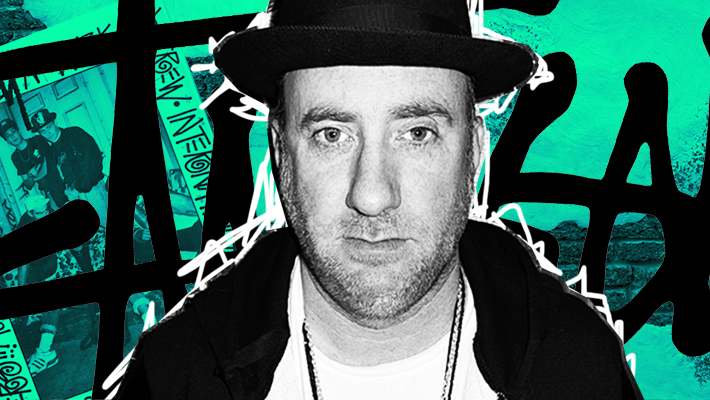There’s a saying: “Eighty percent of success is showing up.” But after three decades with the same person showing up around every major milestone in streetwear, you have to start wondering if it’s the man. Not the location.
I vividly remember seeing Paul Mittleman for the first time around 1983. Immediately I knew he was deep into the world of skating and surfing because of his clothes. Back then, there was no “streetwear.” Getting the right look could only be accomplished by cobbling together the right items from thrift stores, sporting goods stores, work wear stores, Army Navy surplus shops, and the one lone skate shop in the city — Dream Wheels. But Paul’s outfit that day was way beyond what anyone else could get their hands on. He had shorts that the rest of us NYC kids had only seen in magazines from California.
Soon, I would discover that Paul’s family owned one of the most popular New Wave thrift stores in New York City — Pandemonium. In the 80’s, there was a half-dozen of these neon-colored, MTV-era thrift shops in NYC. Everyone shopped at these few stores and Paul’s family owned one of them. It’s here that Paul cut his teeth. He was a buyer, getting the red carpet rolled out for him by big brands, while the rest of our crew was trying not to flunk out of high school.
As a buyer, a young Paul met a California-based surfboard shaper named Shawn Stussy. It was Paul who led the way for the Stüssy brand to expand beyond the beaches of Orange County and into the streets of New York City.
Therein lies the man’s genius: Paul has the ability to see where fashion can evolve. He has a proven track record of consistently adjusting the global trajectory of style and fashion into new, unexplored areas. Areas that, more often than not, change the game forever. By bringing the Stüssy surf lifestyle brand to the dangerous city streets, Paul helped to create an intersection between two previously opposed cultures. Two cultures that fused into the nascent foundation of what would one day grow into the contemporary culture now known as streetwear.
From there, Paul went on to co-found Phat Farm (with Russell Simmons, Alyasha Owerka-Moore, and myself). It was another landmark achievement. Phat Farm was the first clothing brand to be associated with, and created by, a hip-hop mogul. Phat Farm paved the way for everything from Rockawear to Sean John.
More recently, Paul went to work at Adidas Originals. When he arrived, Originals was Adidas’ heritage line, devoted to celebrating the long legacy of Adidas’ athletic achievements. After Paul, Originals was transformed into the home of Pharrell’s Adidas footwear line, as well as the Yeezys, by Kanye West.
Over the years I’ve been privy to all of Paul’s contributions to the culture. His is a story I am privileged to share with you all now — in this episode of The Masters.

